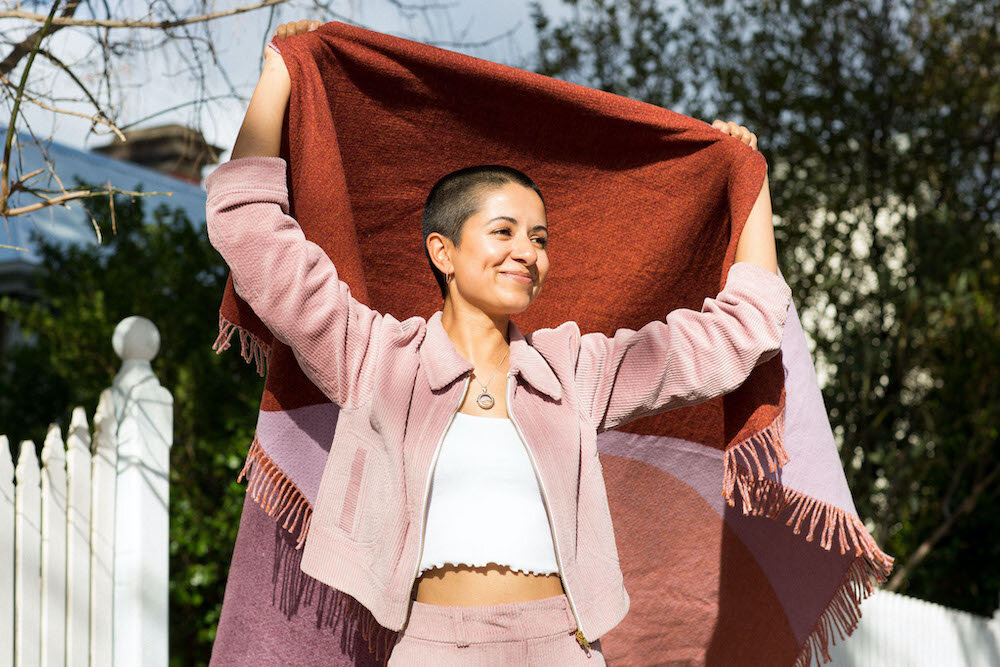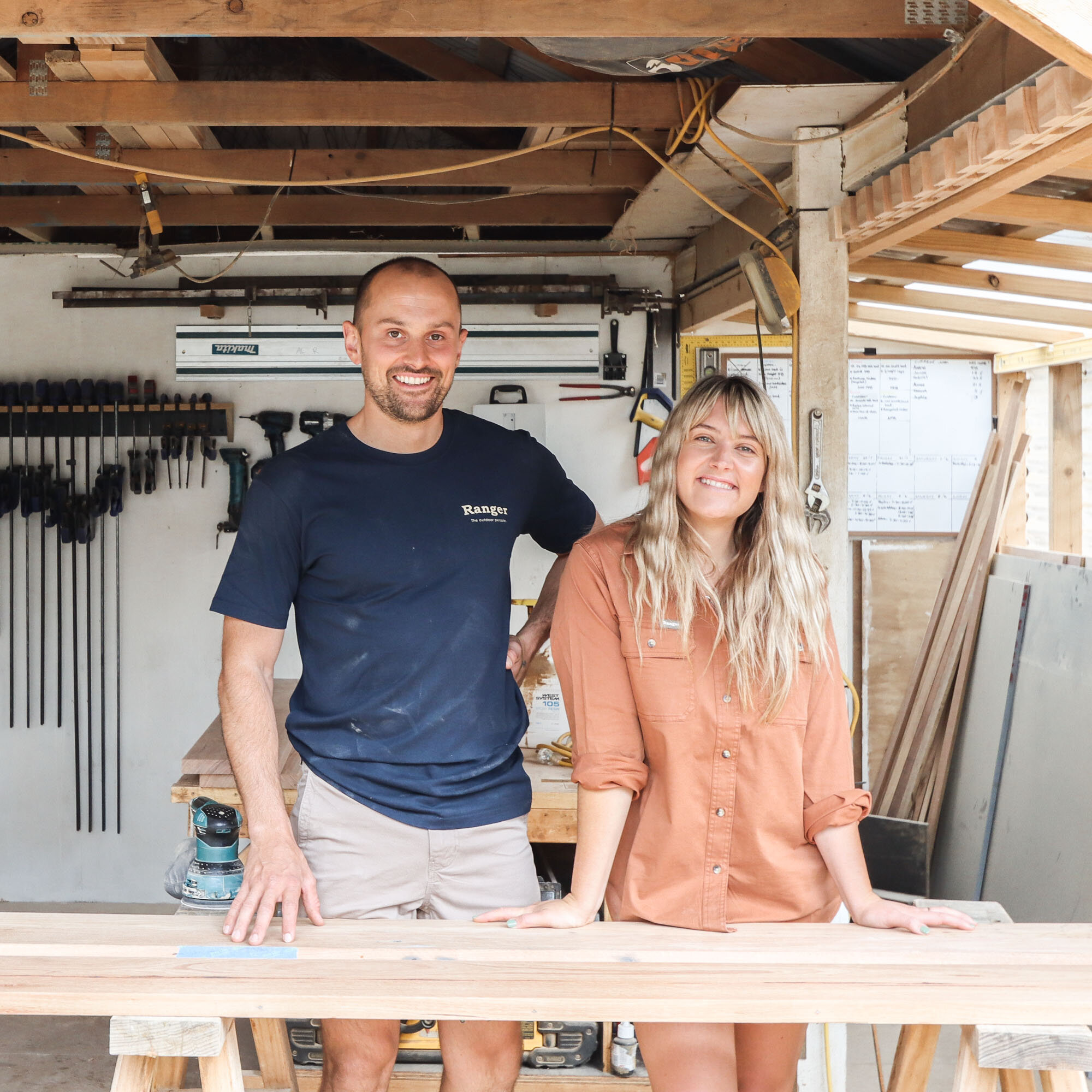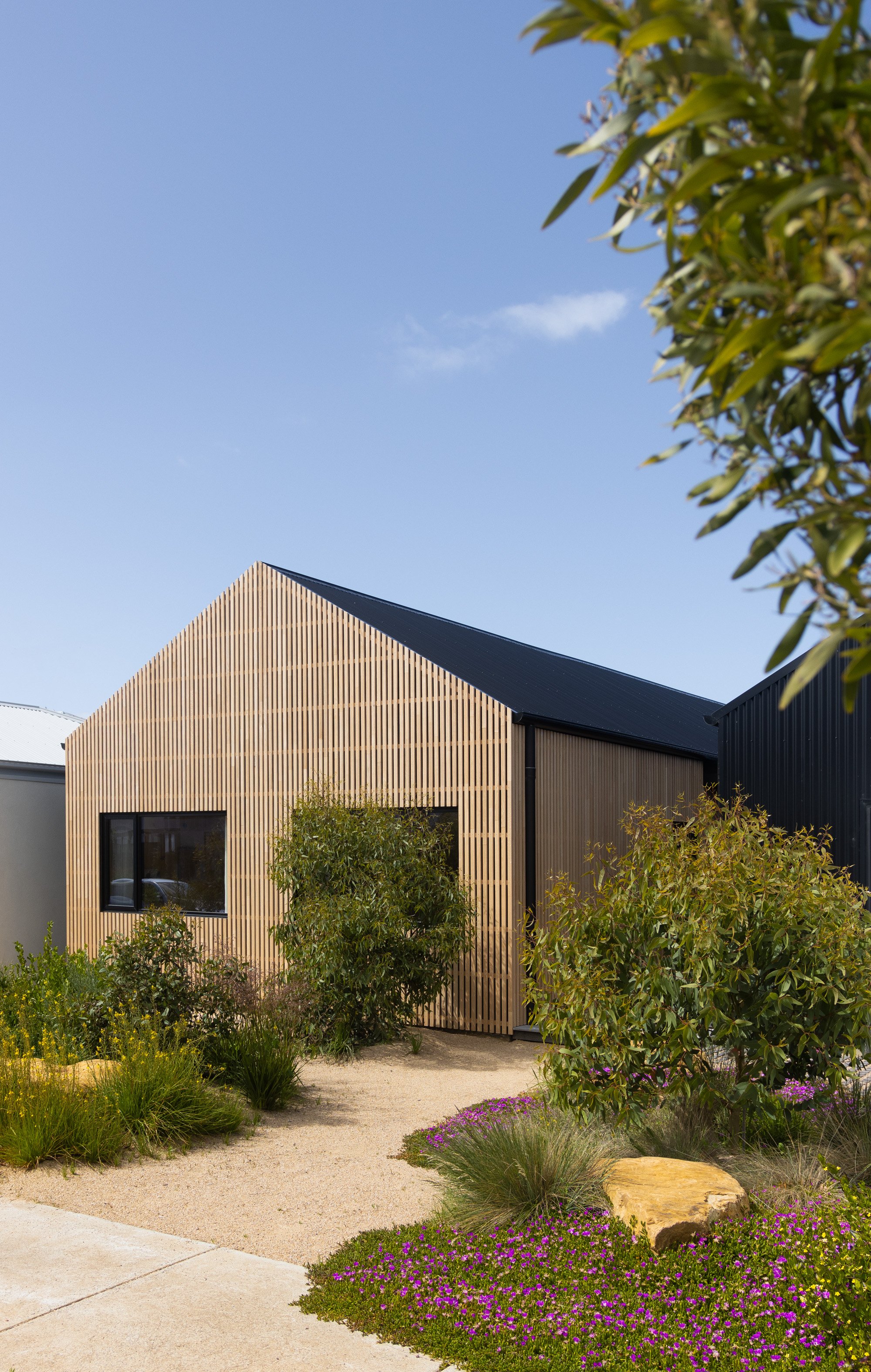Creating with Sam & Karina of Seljak Brand
Q&A
WITH Sam Seljak
Melbourne . VIC
Wool blankets make me feel nostalgic, with a whipstitch edge and patches sewn on the corners they remind me of growing up as a Girl Guide sitting around the campfire. After camp my mum would stitch on my new patches like her mum had done for her.
I loved looking at my mums Girl Guide blanket from the seventies, running my hands over the little embroidered pictures. One thing is for sure, wool blankets hold up over the years and truly do last a lifetime.
I first came across the beautiful Seljak blankets when I met Hannah Sultana from Slow Trading - a store that values independent and eco-friendly brands. I immediately fell in love with the product and after further research I fell harder for their ethos.
I couldn’t think of a better time than now to share this interview with Sam and Karina Seljak, founders of Seljak Brand - two sisters on a mission to change the face of manufacturing and consuming.
Here’s a summary of some of the amazing achievements the two made in 2019 -
Diverted 900kg of textiles waste from landfill to make our blankets
Donated 54 blankets to the Asylum Seeker Resource Centre in Melbourne
Organised three Seljak Brand panel discussions about climate change and limiting global warming to 1.5°C
Attended former US Vice President Al Gore's Climate Reality training to arm ourselves with the latest climate science
Received $30,000 from Macquarie Group and Sefa Partnerships Kick Starter Program to help increase Seljak Brand's impact
Were awarded best in Sustainable Design as The Design Files 2019 Design Awards
Inspiring huh?
Scroll on to read our interview with Sam & Karina of Seljak Brand, closed-loop blankets made from textiles waste off the factory floor at mills in Tasmania and Lithuania.
x IMO
Can you tell us a little about your backgrounds before you started Seljak Brand?
Though a trained fashion designer, Karina worked in artisanal small-batch food production in New York City after graduating. It only took interning for free for 6 months for her to see the monumental amount of waste the fashion industry generated in its rapid production and fast-expiring trend-based collections. She found the food community was far more innovative. My training was in economics and journalism; and later a Masters in Sustainability Leadership. I had worked at an Indigenous design agency and had started several other community initiatives including No Lights No Lycra Brisbane and The Box art gallery. We wanted to bring together Karina's design and product experience and my purpose-driven business background when starting Seljak Brand. Our strengths complement one another.
“Our strengths complement one another.”
Can you give us insight into your journey of creating Seljak Brand?
After a few years of doing our own thing after studying, we decided it was time to take the plunge and launch a project together. We really honed in on what we wanted our purpose to be using the Ikigai method to workshop how we could best contribute to society. We also took a 3 month trip to India together, visiting multiple social enterprises and textiles facilities to understand the industry on a global scale. Back home, we were inspired by the resourceful and mutually beneficial practices we are saw sprouting up all around us, so we poured our time into understanding the circular economy and closed loop methodologies. Ultimately, we wanted to test the new paradigm ourselves, where things are built to last and be renewed. Our respect for Australian wool lead us to the oldest weaving mill in Australia, which retains all of its production offcuts for future use. Using these offcuts to make blankets, we incorporated a closed loop system that uses the blankets for re-manufacture at the end of their life. And Seljak Brand was born... we launched in March 2016 and have since worked towards accelerating the transition towards a more circular economy.
You won The Design Files Sustainability Award in 2019 and are well known for being a close-loop textile company. Can you tell us more about the lifecycle of your blankets?
Yes! We were honoured to be awarded by The Design Files, what has become something of an Australian design institution. We work with Australia’s oldest mill in Tasmania and a 93-year-old weaving mill in Lithuania to weave recycled wool blankets that are closed loop.
The blankets are made from a minimum of 70% recycled merino or lambswool and a 30% blend of other fibres (mohair, cotton and alpaca) and poly for strength. Wool is a natural fibre that is incredibly hard to replicate – it’s a renewable resource, it is odour and stain resistant, antibacterial, lightweight, breathable and insulating. After a blanket has enjoyed a long, adventurous life we’ll collect it free of charge using a carbon neutral courier service. Back at the mill, we’ll shred it and spin it into new yarn to make future blankets. This circular model allows us to divert waste from landfill and create luxurious and useful blankets.
This is what closing the loop is all about; using renewable energy, using recycled materials reducing extraction and landfill, and finding end-of-life solutions so resources can be used again and again in endless loops. It’s the holy grail of sustainable product design!
“It’s the holy grail of sustainable product design!”
How would you describe the Seljak style and where do you get your inspiration?
We let the waste speak for itself. Our blanket’s aesthetic is defined by the mottled, rainbow speckle inherent in using textiles waste. More recently, we’ve introduced abstract designs that are Karina’s artwork woven into recycled blankets. It’s an exciting new method to explore (and technical construction to understand!.
On a more macro level, we’re always inspired by the natural environment in Australia; from the depths of old growth Tasmania forests, to the surreal sand dunes of the central desert to the delicate but lively Great Barrier Reef. Climate change, and nature’s contrasting strength and fragility, influence not only the aesthetic of our products, but the design of the manufacturing systems involved in making our products. Careful consideration is paid to all aspects; from raw materials, to the way people will love and care for it, to where it will go when a customer doesn’t want it anymore. It’s an integrated approach and we draw inspiration from schools of thought like biomimicry, cradle to cradle, holistic activism and ancient land knowledge.
“Careful consideration is paid to all aspects; from raw materials, to the way people will love and care for it, to where it will go when a customer doesn’t want it anymore.”
We're big believers in sharing your knowledge and love that you two offer consulting for other companies who want to close the loop too. Can you tell us why you think this is important and little more about what you offer?
Our vision is to live in a world without waste and we can’t do that alone. So if we can enable others to join the movement, we love to do that. We work with organisations and individuals in various capacities; in partnerships, as consultants and as thought leaders to develop the textiles recycling and closed loop design movement in Australia. We’ve done lectures, educational videos for students and hosted and facilitated events to enable conversation about global issues on a local level. We’ve helped other labels with supply chain sourcing and also facilitated the Better Threads roundtable for fashion business waste (denim specifically) to determine a shared mission and recycling opportunities. We’ve initiated innovation programs to understand how Australian textiles waste can be resourcefully used and kept out of landfill. So we have our fingers is many pies!
“Our vision is to live in a world without waste and we can’t do that alone. So if we can enable others to join the movement, we love to do that.”
We spy your blankets everywhere... here in Australia and also popping up around the world. How far have you distributed your product and where can we get our hands on them?
We have about 20 or 30 stockists around Australia, and a select few overseas, from Lebanon to Norway to Japan. Our Japanese stockist has now become our distributor there and takes care of translating all of our comms for the Japanese audience. When we find people who believe in our vision as much as we do, we are stoked to collaborate with them! Otherwise, if you’re in Australia, we mostly sell online but you can also experience them IRL at some great hotels and accomodations around the country, like Paramount House Hotel and Tassie Walking Co’s glamping huts.
You're sisters and business partners!! How do you find working together and who does what within the business?
We’ve never actively defined roles so we really embrace shared leadership. Naturally we fall into some roles more easily. While I was living in Sweden, I met with European recyclers and producers to understand how we could set up systems and scale overseas. Meanwhile, Karina was here in Australia galvanising the local textiles community to see where opportunities and issues stood for local production and recycling. We both have branding and marketing experience, but I focuses on amplifying our work and message, and Karina on evolving it. We’re a bit yin and yang like that.
What does a day typical day look like for you both?
We’re used to working together, but apart. In fact, we’ve become pros at it. I work at a shared studio space at The Third Quarter in Brisbane – a gallery for good. And Karina is soon headed back to Melbourne after doing a project in Los Angeles for a few months. Generally, we usually spend the first few hours of every day looking after orders, checking emails, reaching out to our community across the various social platforms etc. The afternoon is for production management, working out textiles constructions, innovation projects, some artwork (if we’re lucky!) and any thought leadership activities we have; whether it’s hosting panels on climate action, speaking at events or contributing to the textiles recycling industry. We’re big on Seljak Brand enabling us to have a healthy lifestyle so we don’t do a lot of evening and weekends (unless it gets reeeeeally busy!).
“We’re big on Seljak Brand enabling us to have a healthy lifestyle so we don’t do a lot of evening and weekends (unless it gets reeeeeally busy!).”
Your top 5 practical tips for running a business?
Do something that lights you up! if you're not 100% into it, it’s going to be hard to maintain the momentum
Think about how you want to be spending your days and highlight your strengths
Just do you! don’t compare yourself to others
Understand deeply that there’ll be a lot of hard work involved
Build a community of like-minded people to lean on, celebrate with and bounce ideas off (even and especially if you’re a solo entrepreneur).
Advice for others wanting to pursue their passion?
Follow your north star! Know where you want to go and let that guide your decision making, your motivations and how you choose to work.
“Follow your north star! Know where you want to go and let that guide your decision making, your motivations and how you choose to work.”
Exciting new projects on the horizon?
We have just launched our first furniture piece – the Floor Lounger – a collaboration with Sarah K of supercyclers. It’s made from shredding and compressing textiles waste from the mattress recycling industry. It can also be recycled at the end of its useful life meaning it’s a closed loop furniture product and will never end up in landfill.
“It can also be recycled at the end of its useful life meaning it’s a closed loop furniture product and will never end up in landfill.”
It’s still in its embryonic phase, but the prototype is one of five finalists in the 2020 Australian Furniture Design Award! We wanted to work with this waste stream because the mattress recycling industry can recapture timber, steel and foam from old mattresses, but they are yet to find a solution for the textiles waste, which ends up being 5kg per mattress. This waste, or shoddy, is a combination of synthetic and natural materials, which are too difficult to separate at a fibre level when recycled. We used the innate nature of the material – mixed fibre including wool, cotton, poly – to guide our production method. Through a combination of felting, moulding, compression and heating/cooling, a solid form was created with no additional chemicals added to the production process...
When designing it, supercyclers and Seljak Brand were inspired by the sustainable lifestyles of people living in Blue Zones, which are the places in the world where people live the longest. Older folk in Okinawa, Japan – one of the Blue Zones – have few furniture items and sit on the floor, getting up and down several times a day ensuring ongoing strength. Using the floor as a space to gather, they foster community through sharing meals together. Strong communities and light activity were key contributors to the longevity seen in the Blue Zones, and the Floor Lounger enables both.
We created the Floor Lounger as an antidote to our complicated and busy lives that doesn’t cost the Earth.
Lastly how do you slow down?
Well there’s no better time to slow down then now. Getting out and hiking together has always been something we’ve prioritised. From Seljak Brand’s inception, when we were hiking for weeks in the Himalayas discussing how we could bring it to life, to even this year when we climbed Mt Kilimanjaro with our family, switching off and going back to basics is essential for both of us. On a more regular basis though… yoga, meditation, dance, ocean swims, nature time, good reads and time spent with loved ones enables us to slow the pace down, feel grounded and feel well.
We’ve started this journal in hope that through us sharing stories like Sam & Karina’s it encourages others to -
Be creative.
To follow your passion project.
Support local artists and makers.
OUR HOPE IS THAT THROUGH US SHOWCASING SMALL, LOCAL AND ETHICAL ARTISTS/ MAKERS/ BUSINESSES IT ENCOURAGES OTHERS TO SUPPORT LOCALLY, HANDMADE.
MORE INTERVIEWS WITH CREATORS, MAKERS & SOCIETY SHAKERS
HEY! WE’RE AL + IMO
We’re a husband and wife duo, building our dream life one DIY project at a time. We are proudly self-taught, furniture-makers, business owners, designers and stylists.
DIY RUNS IN OUR DNA
We firmly believe what you learn should be shared which is why we created our Journal. A place where you can learn new skills and be inspired by other creatives.
Top Categories
eco living
Tread a little lighter on the Earth. Tips for living a more sustainable lifestyle.
DIY
Tools and information to build your own furniture and inspire a low-impact lifestyle.












































